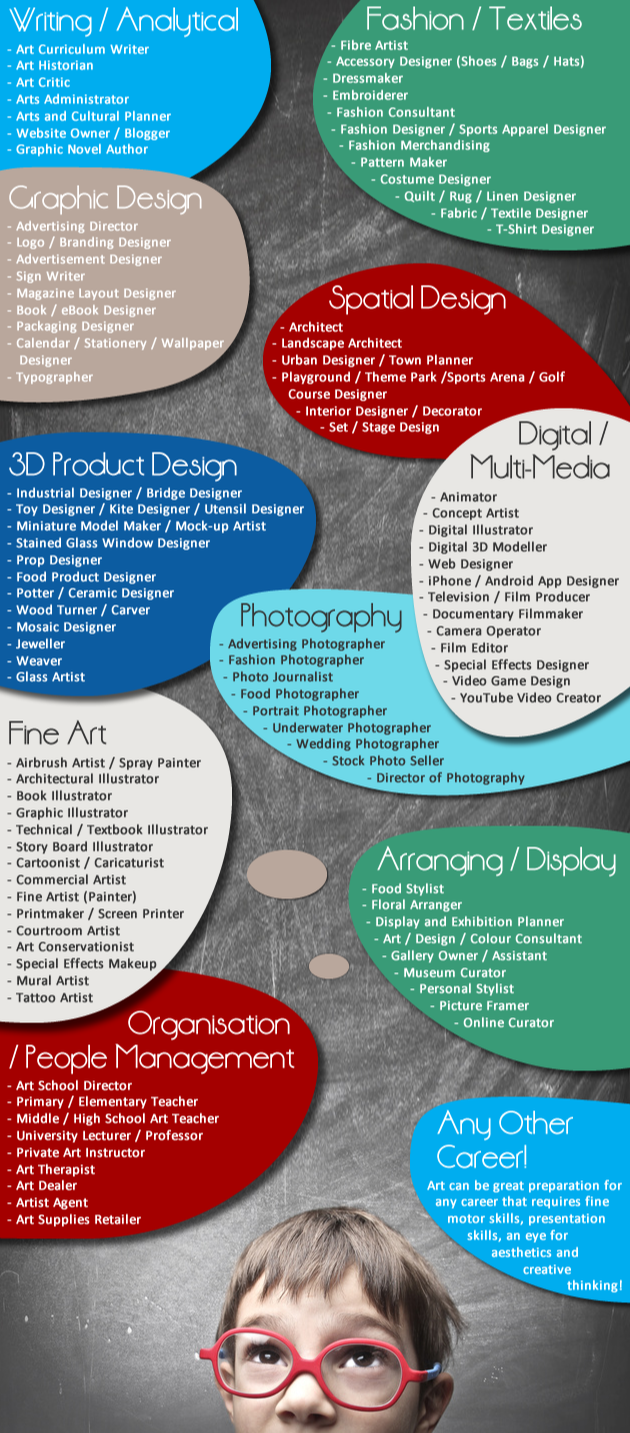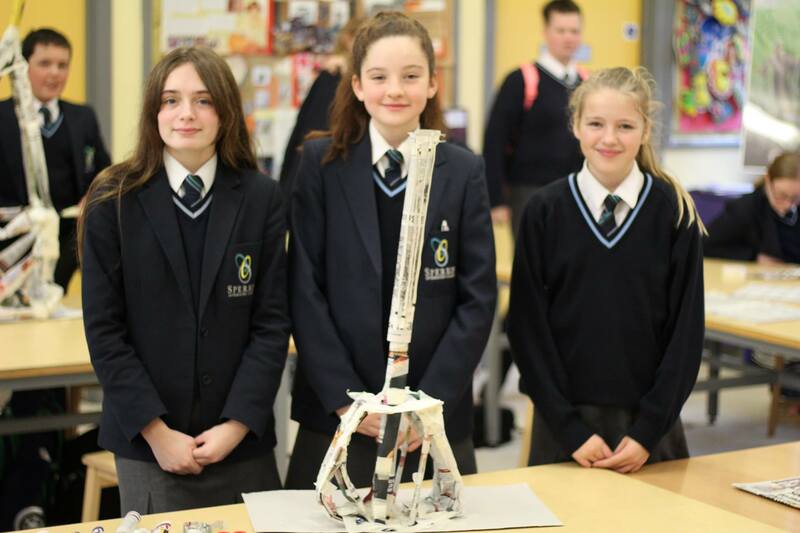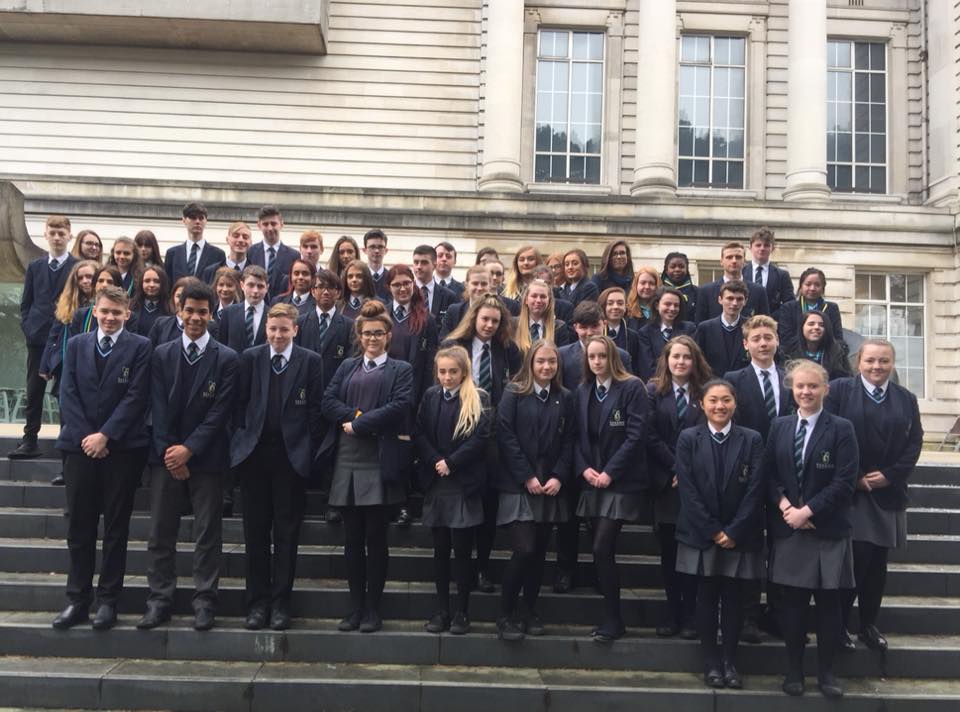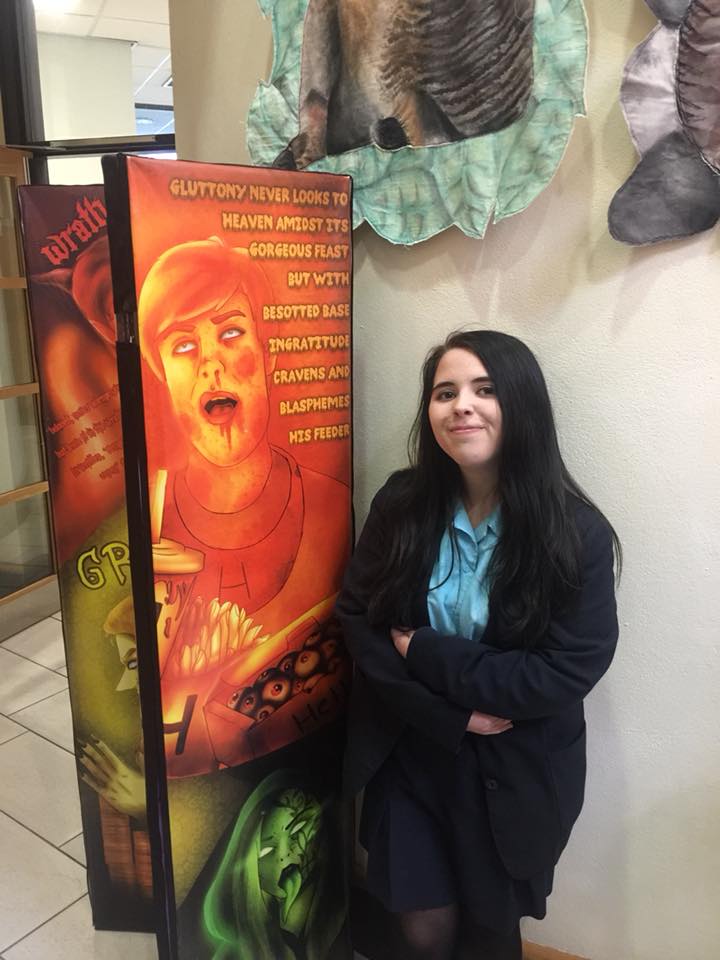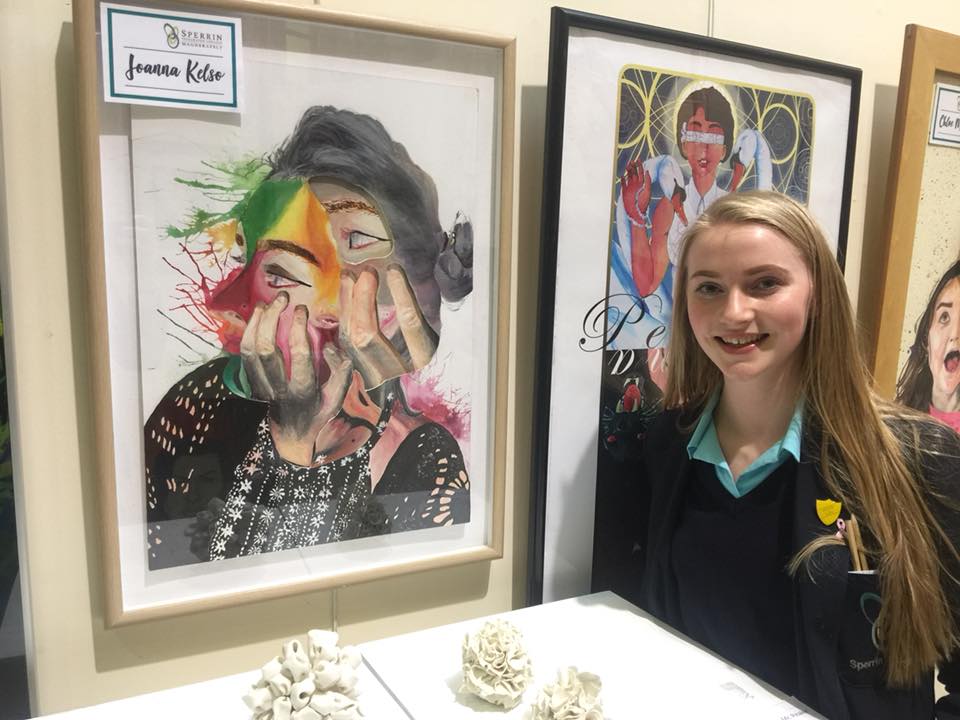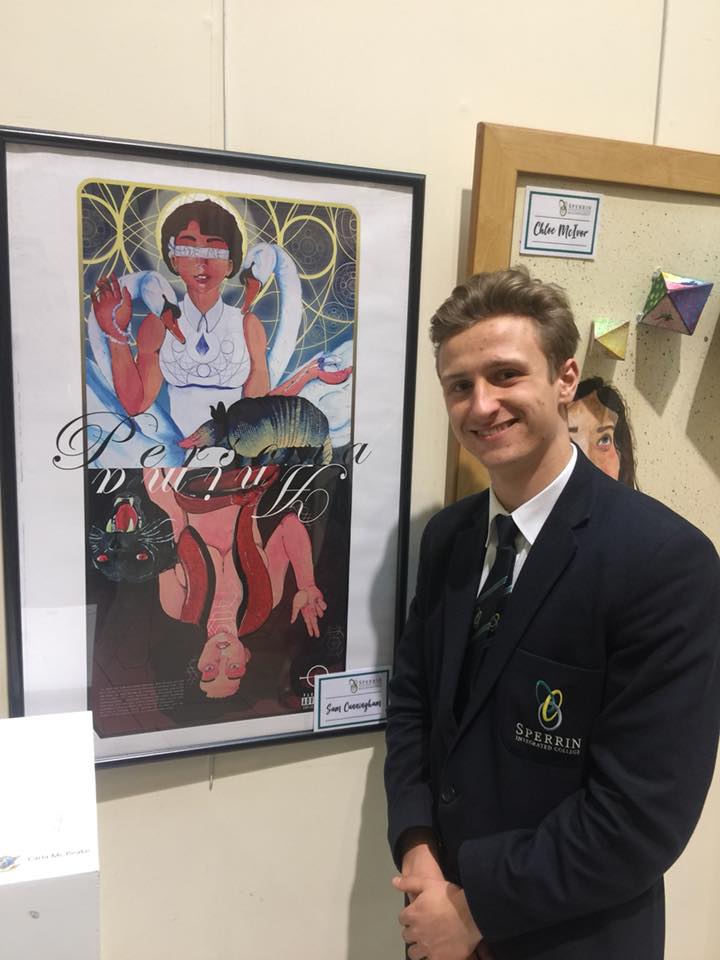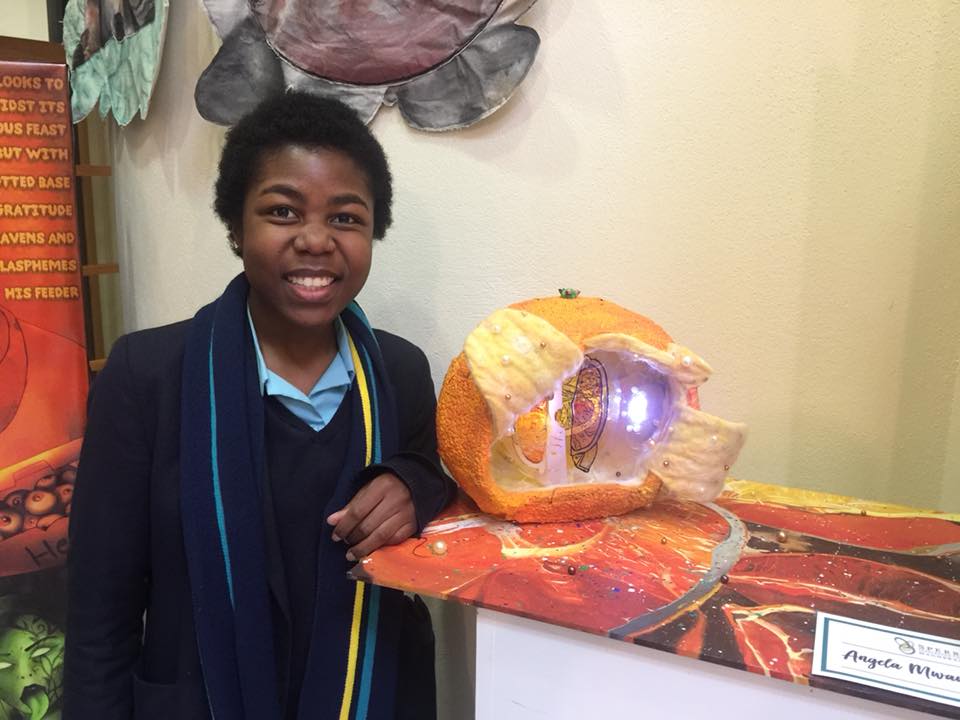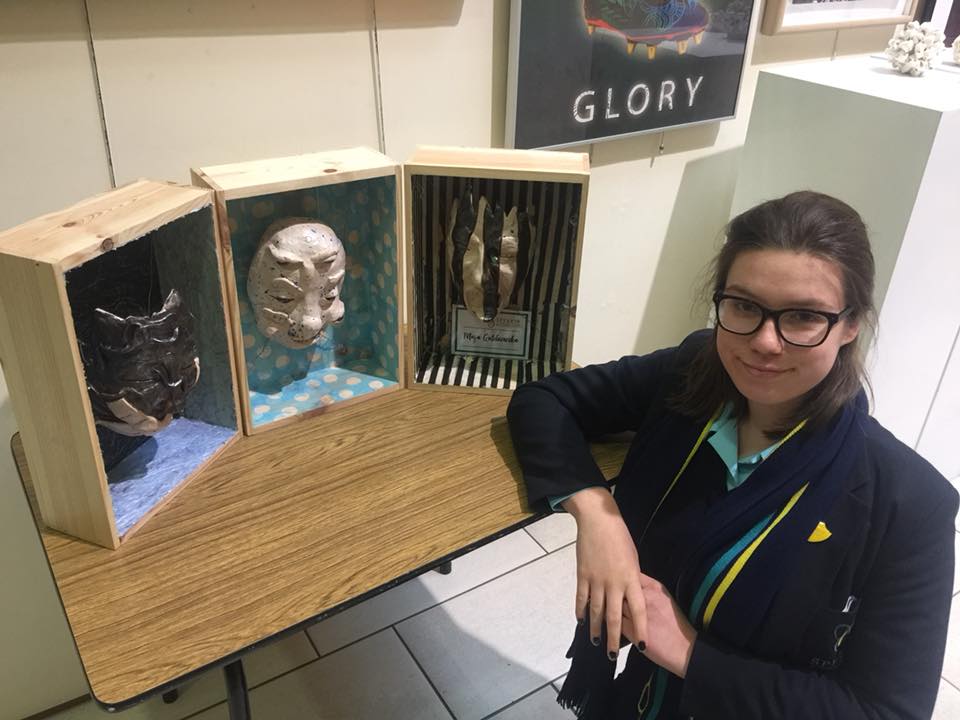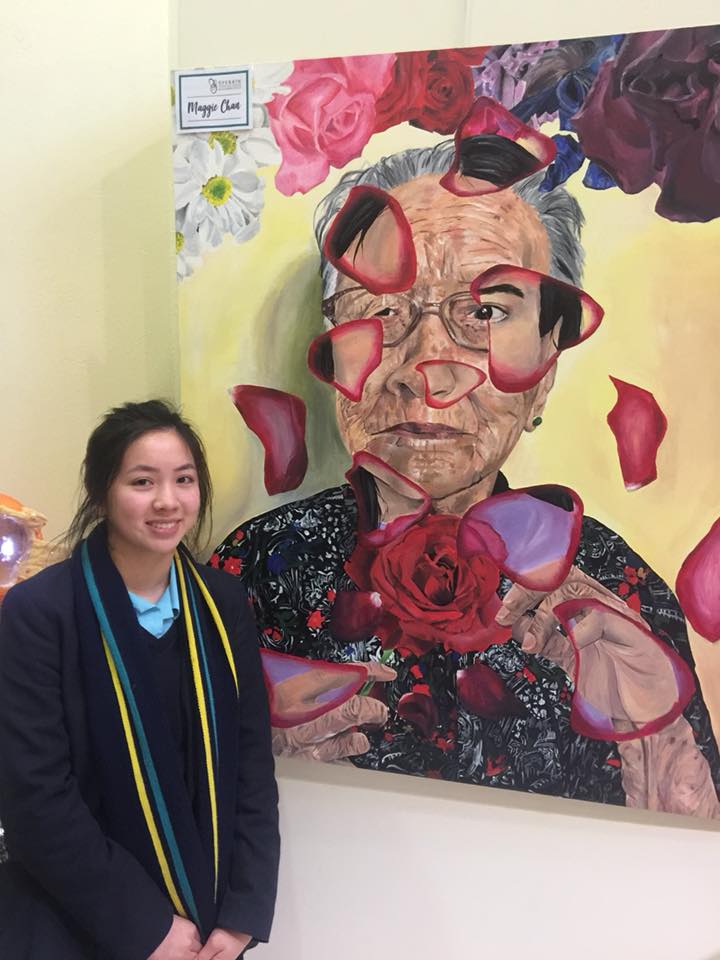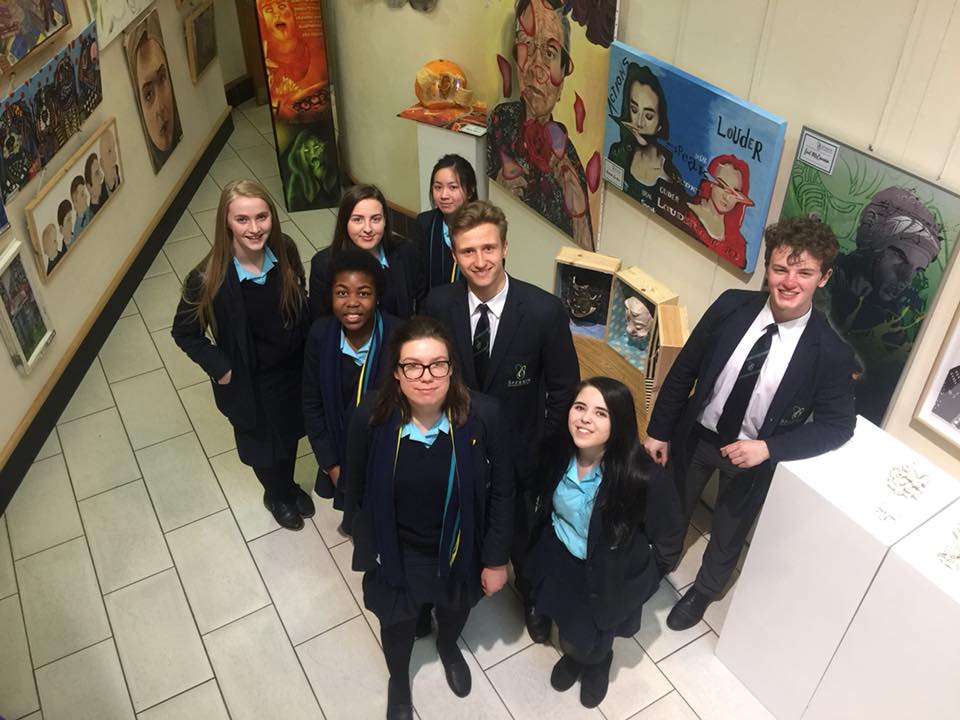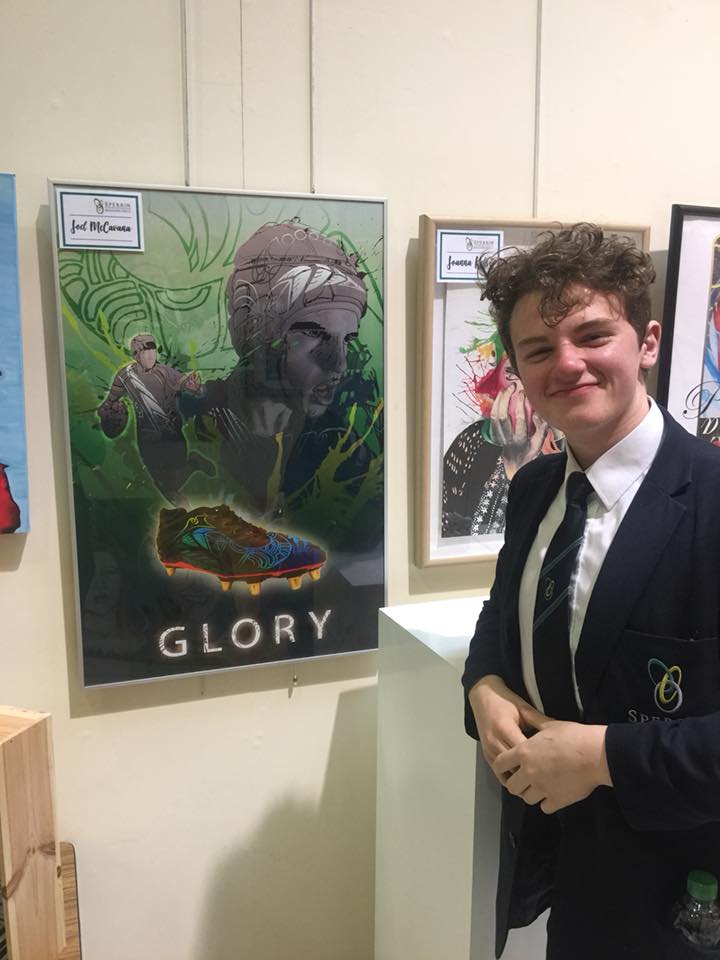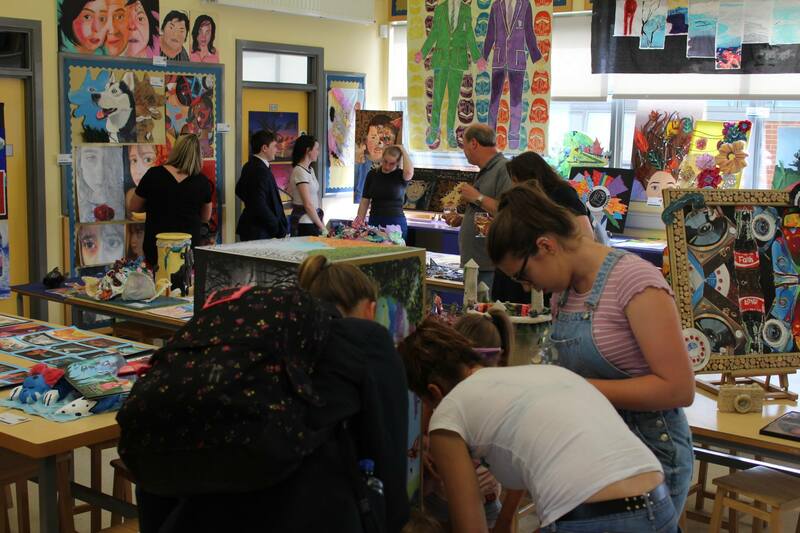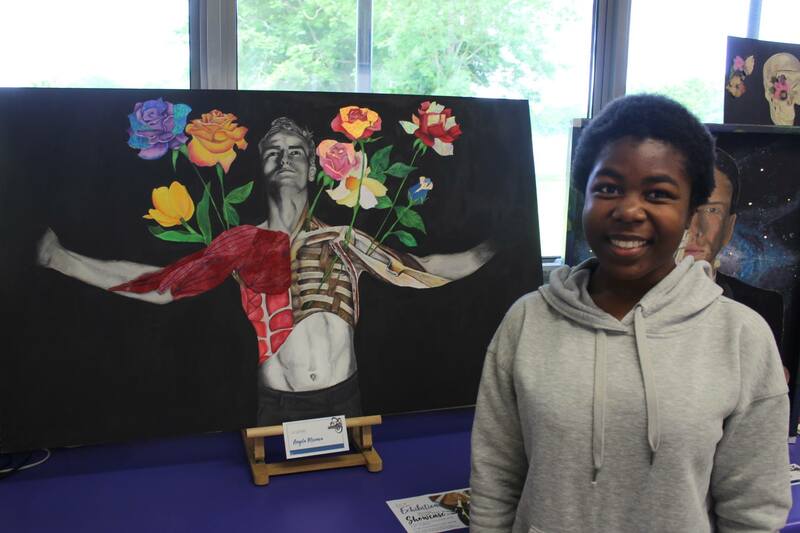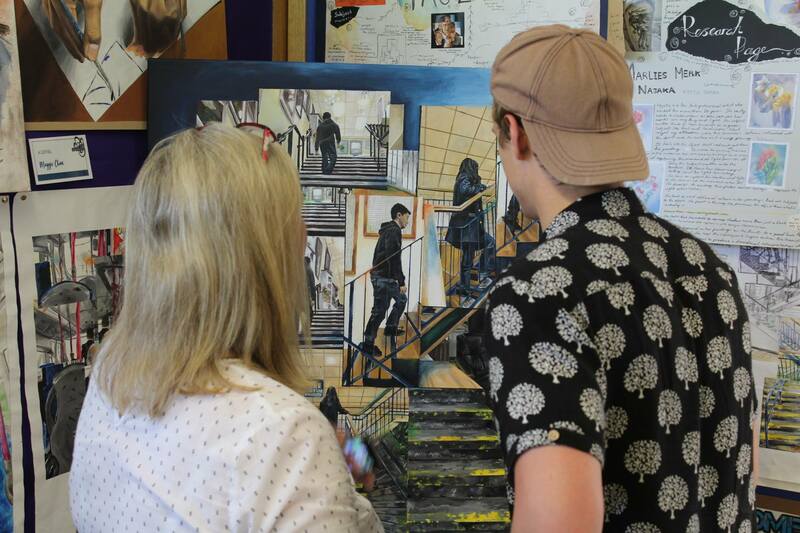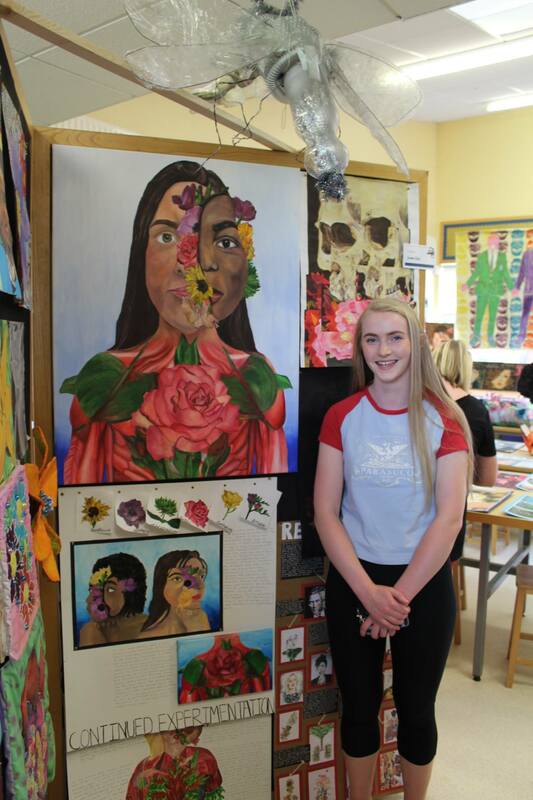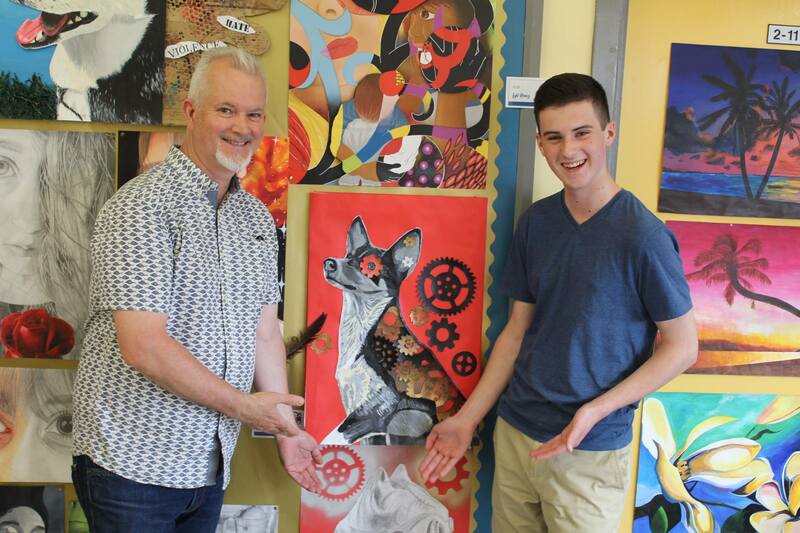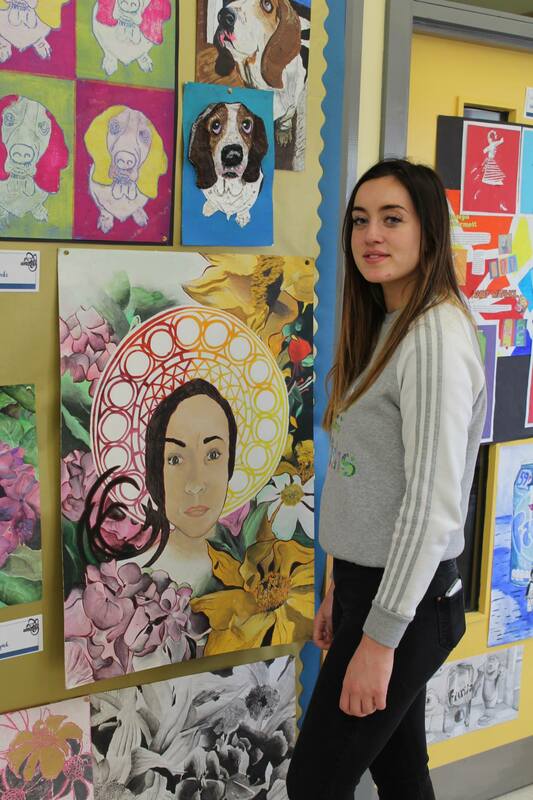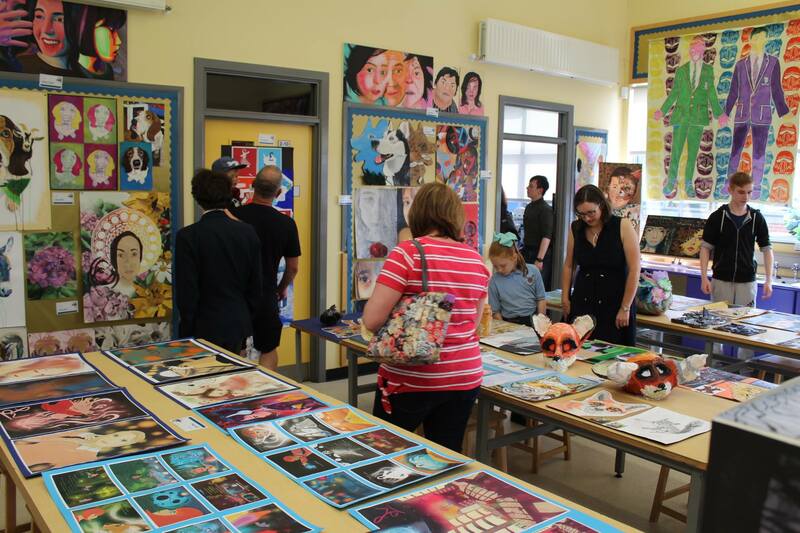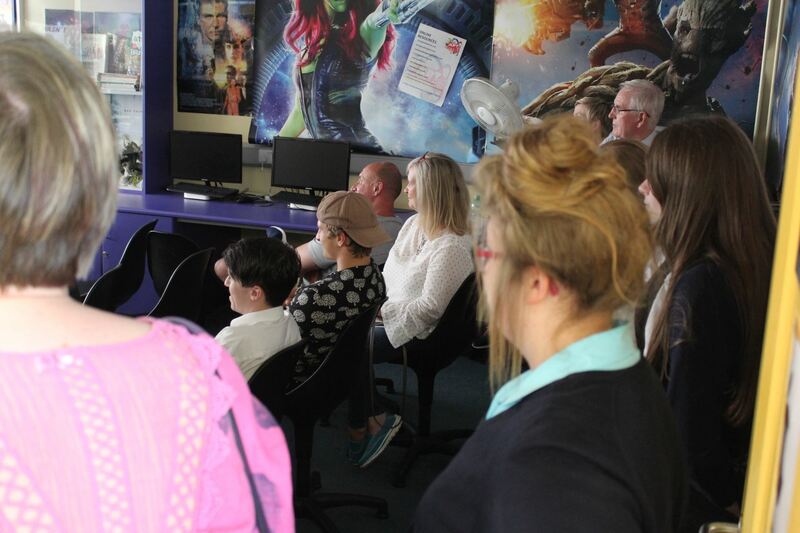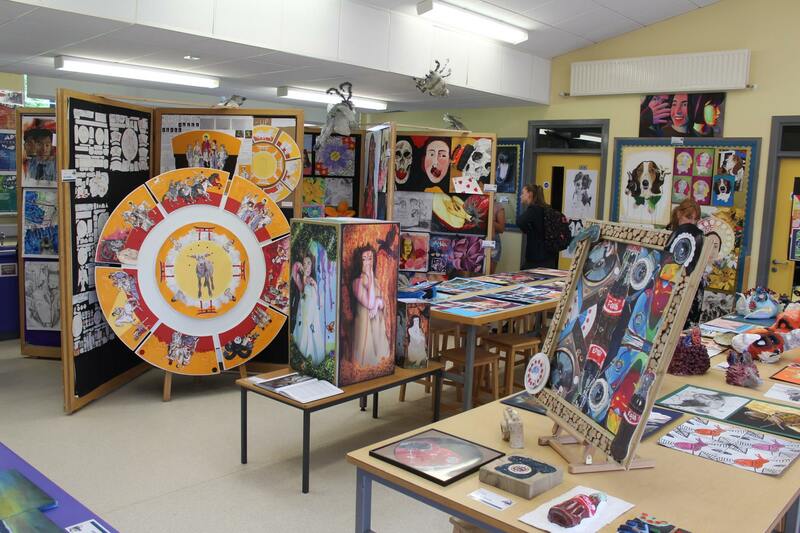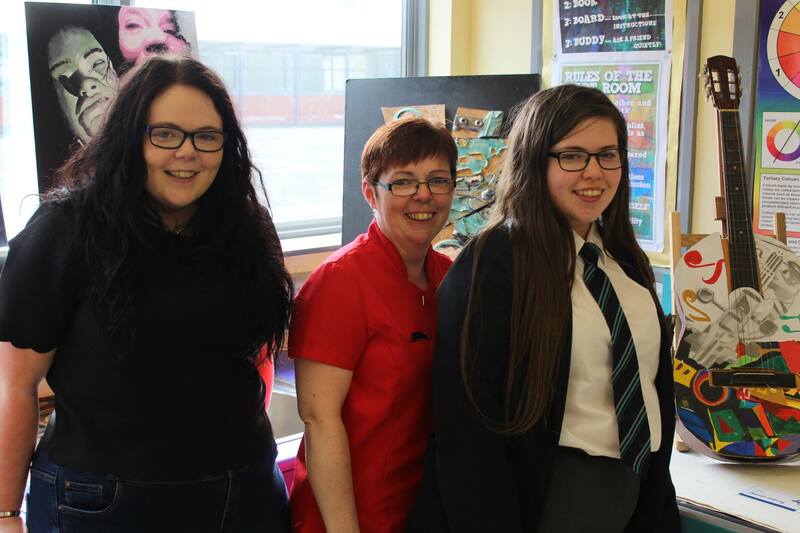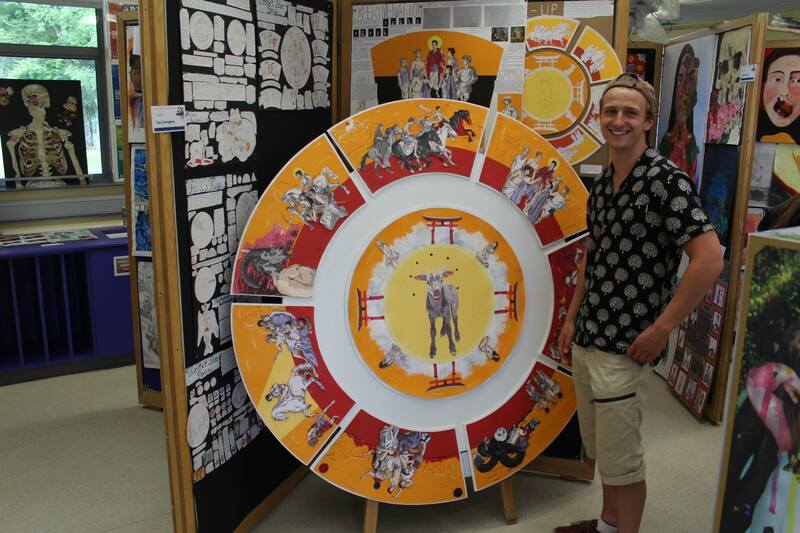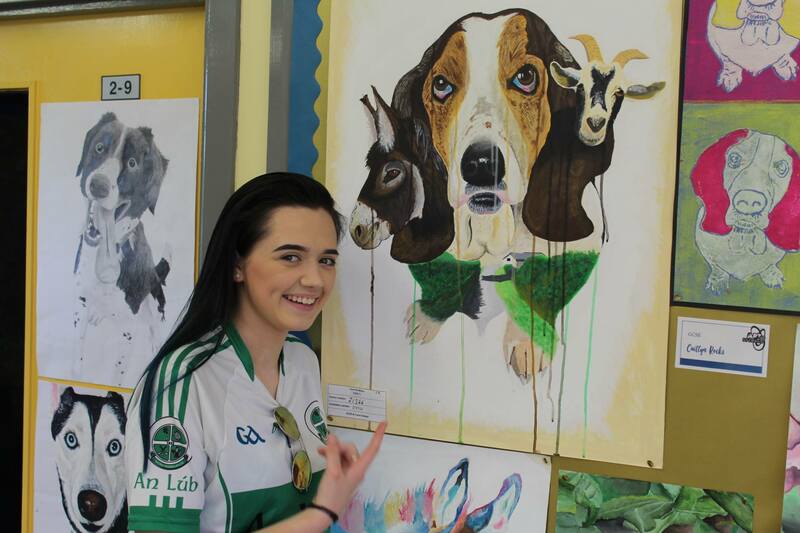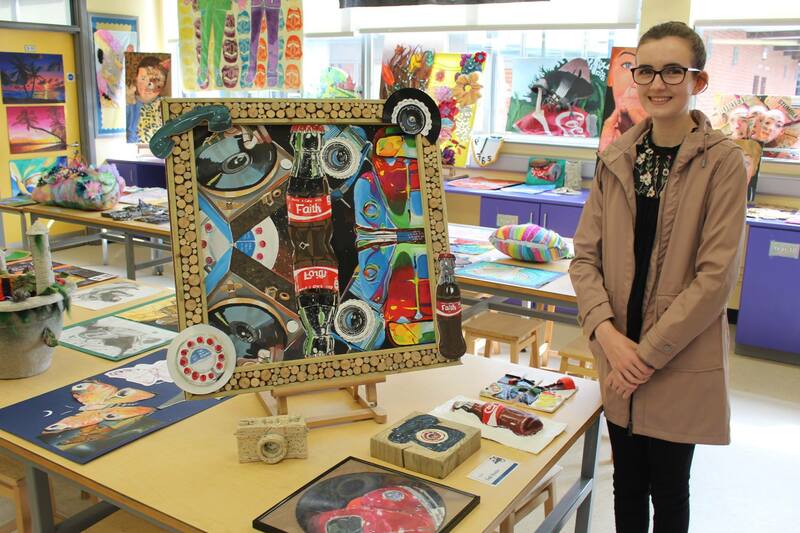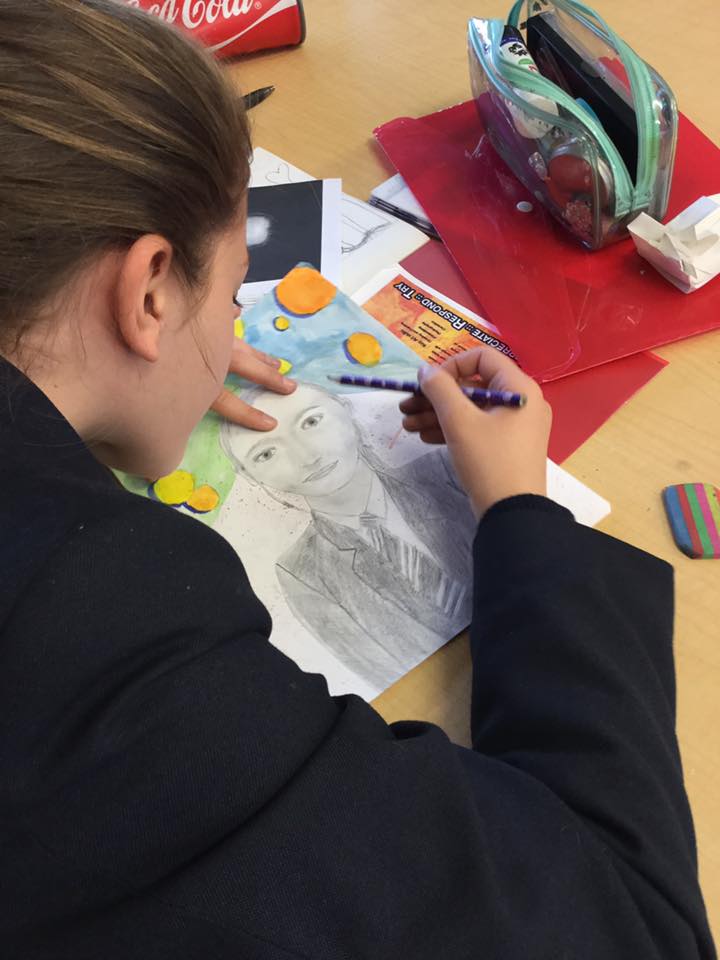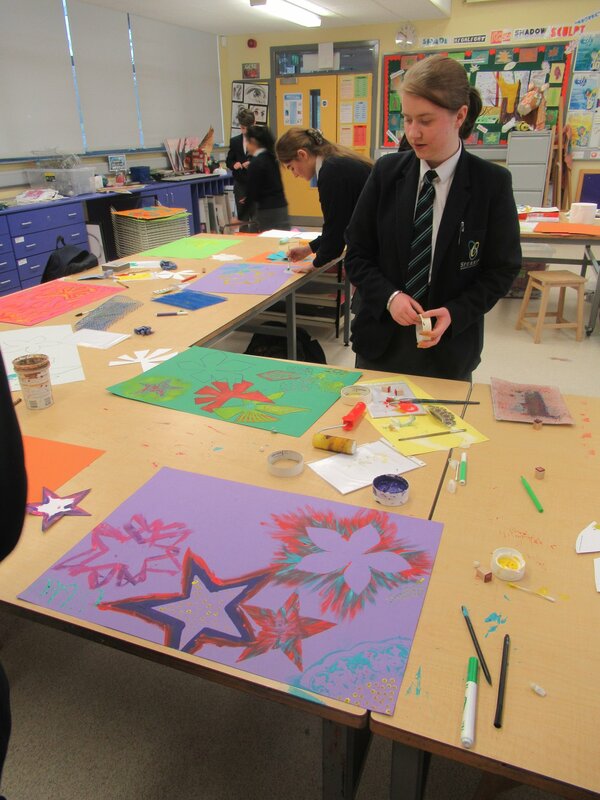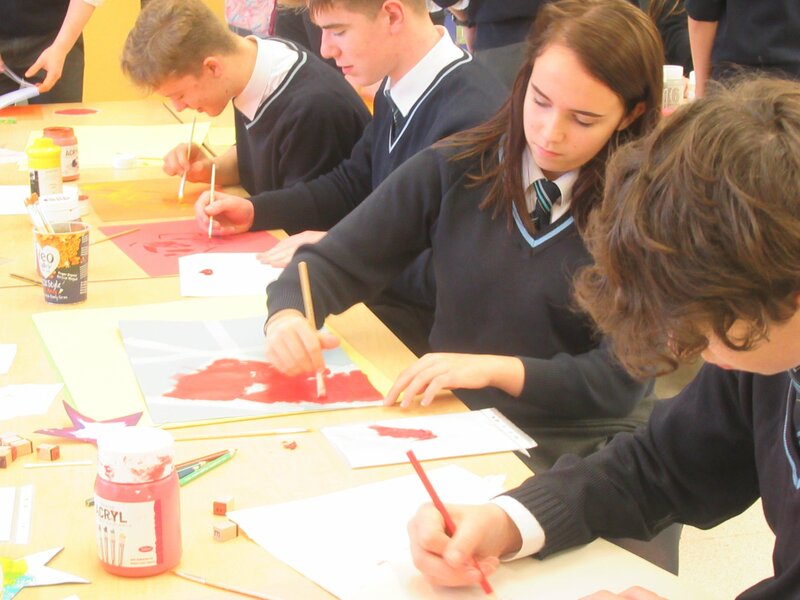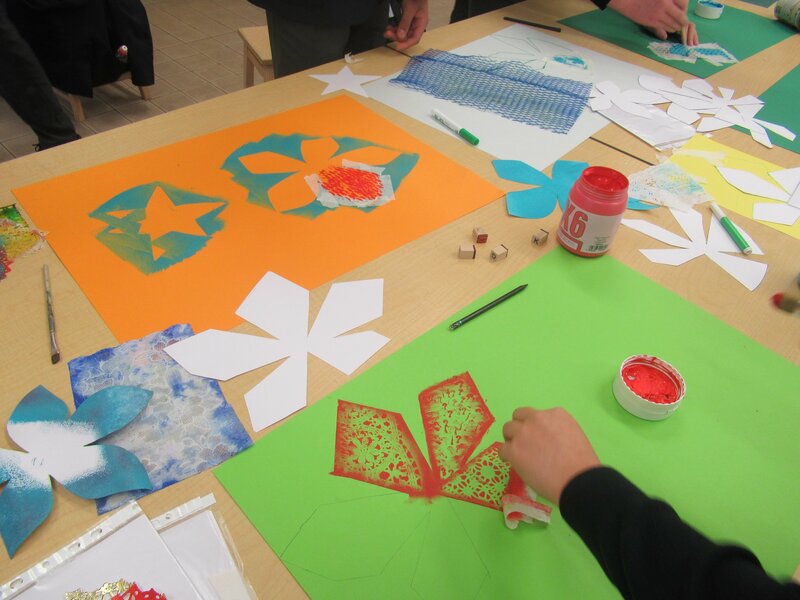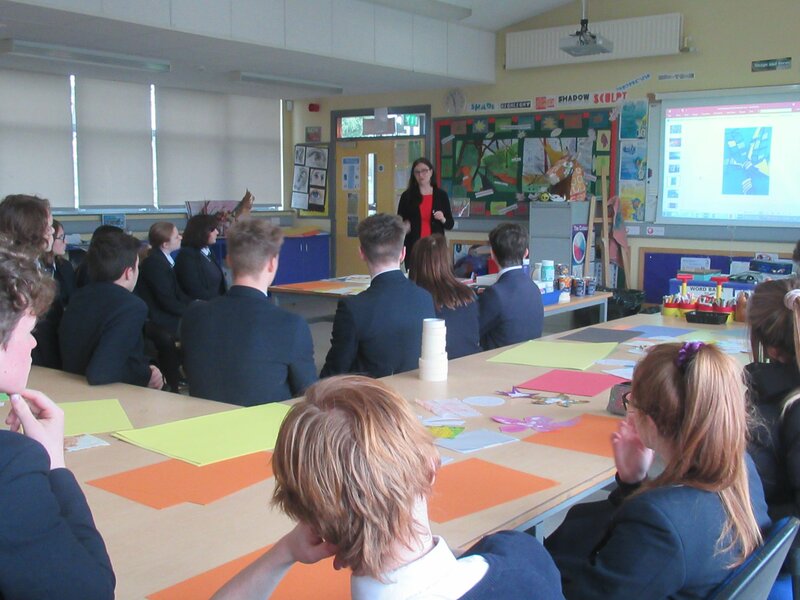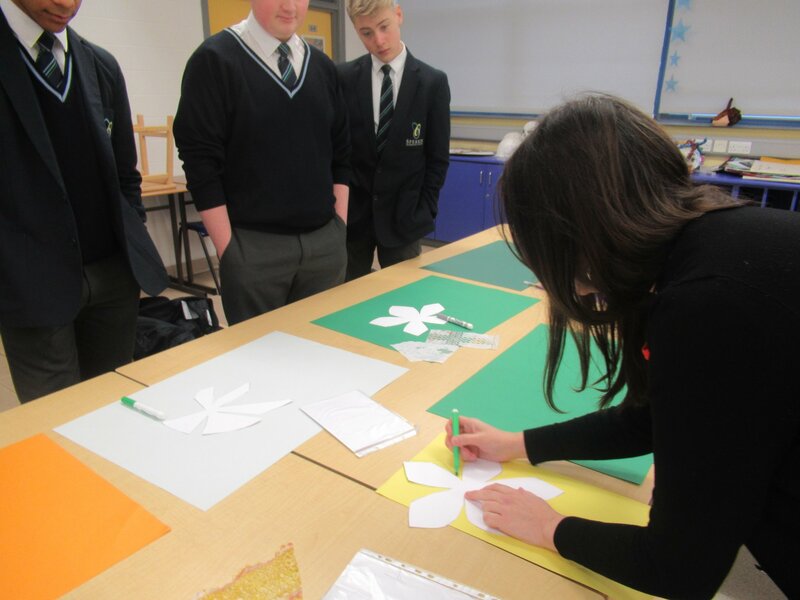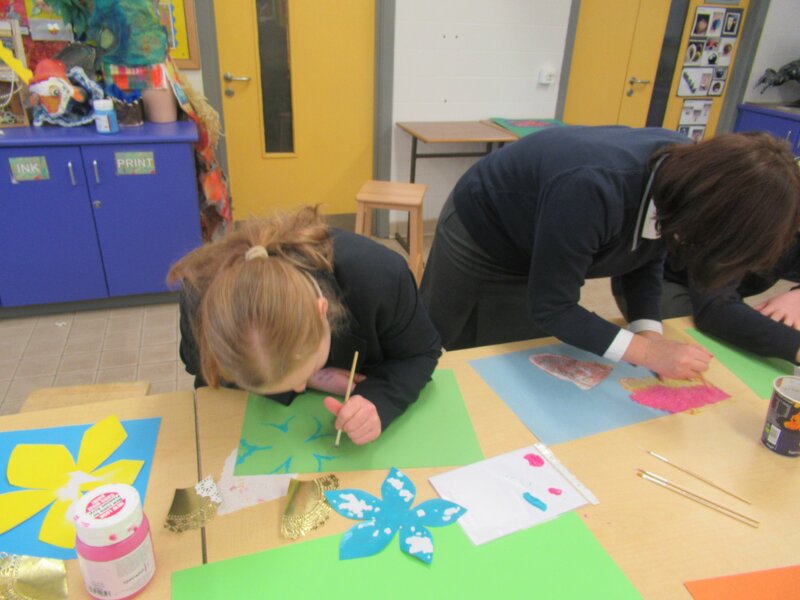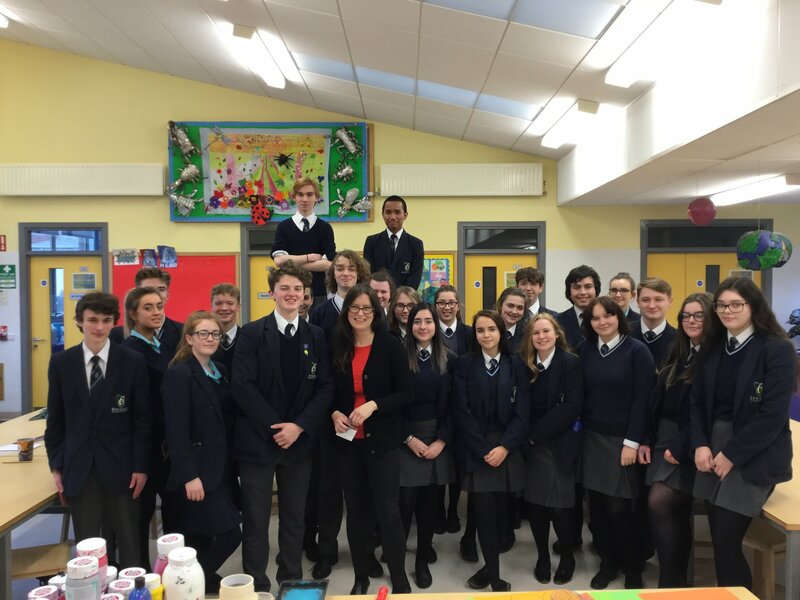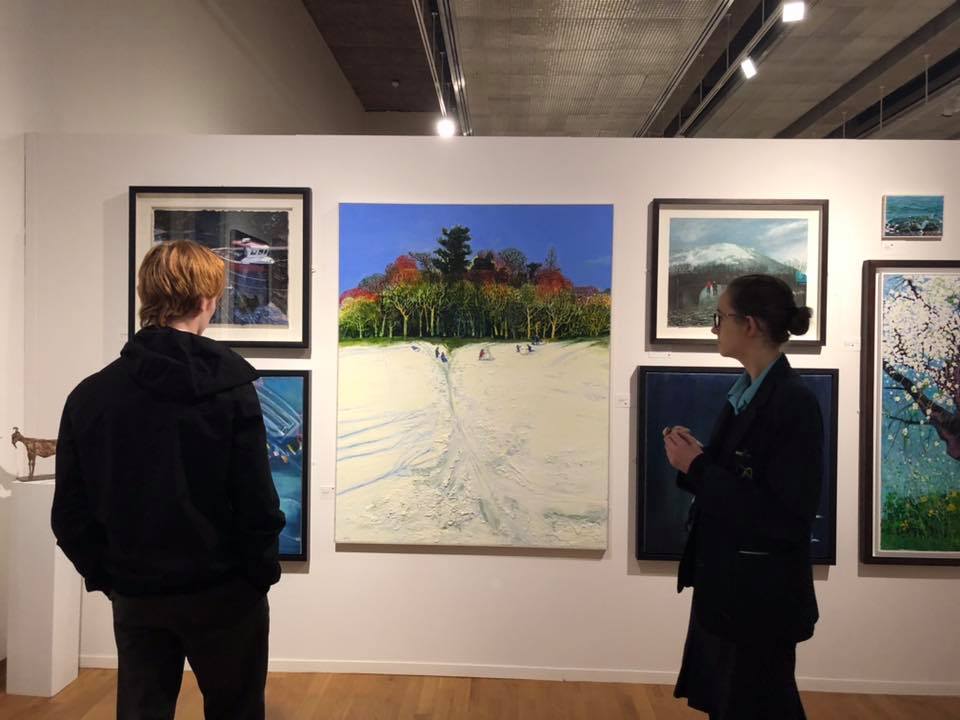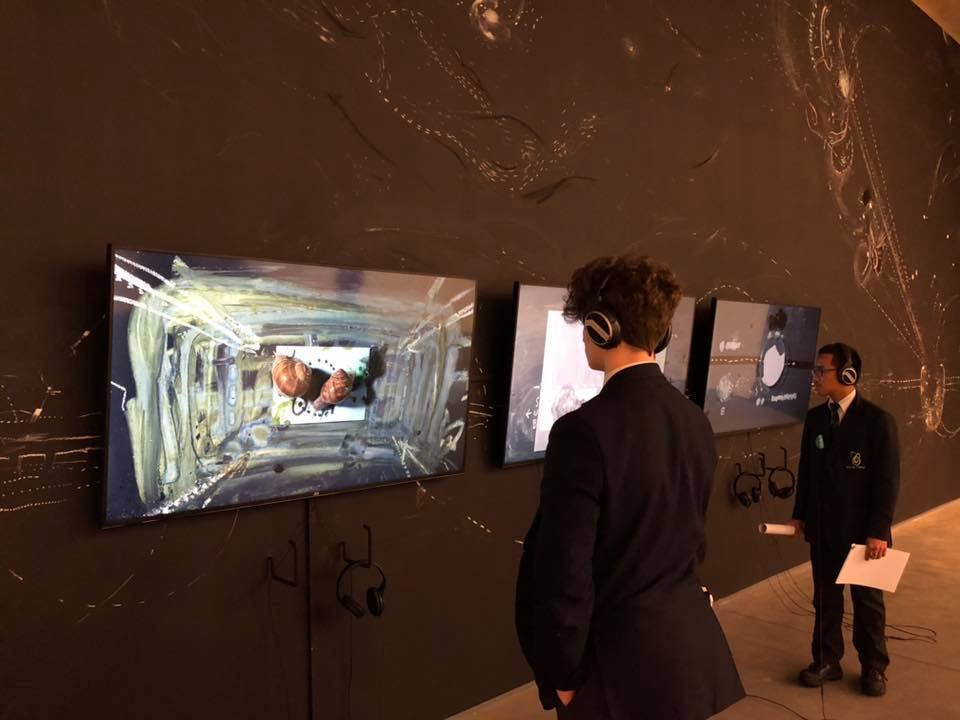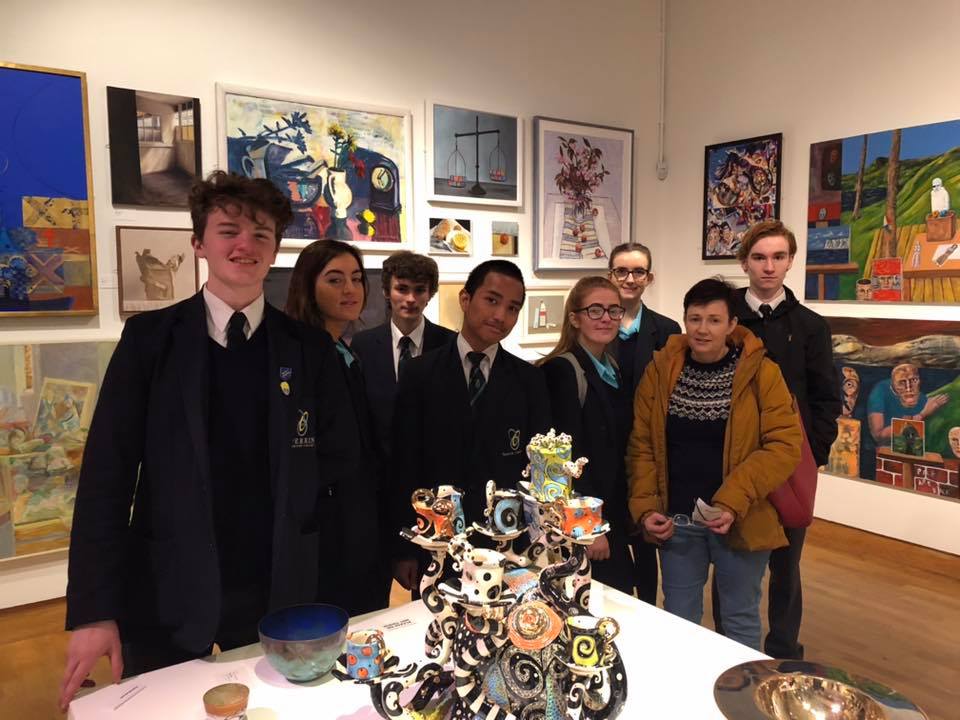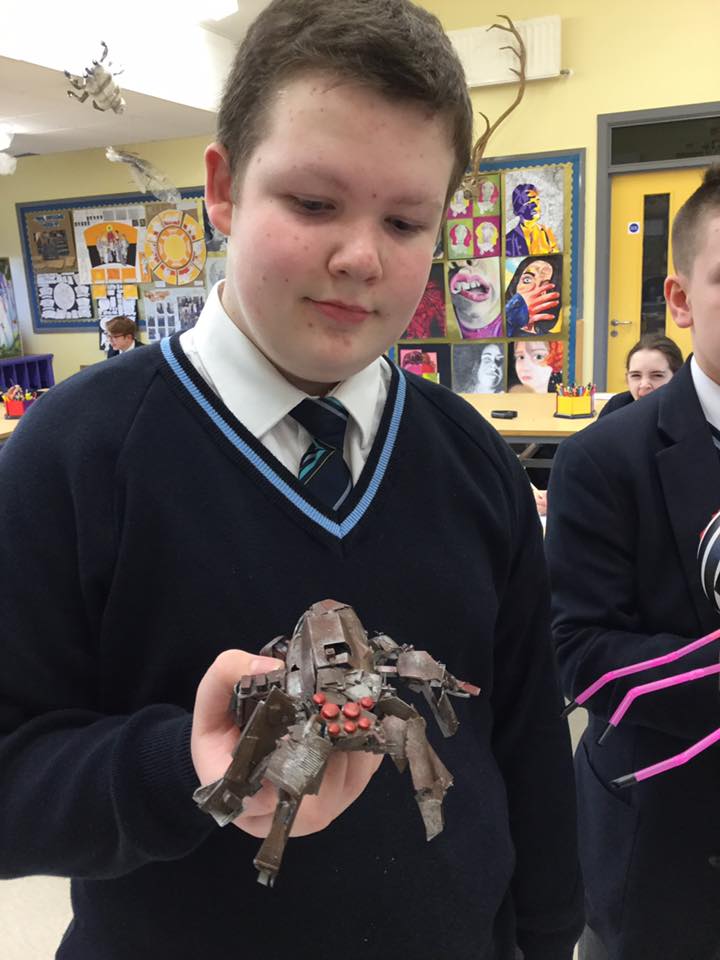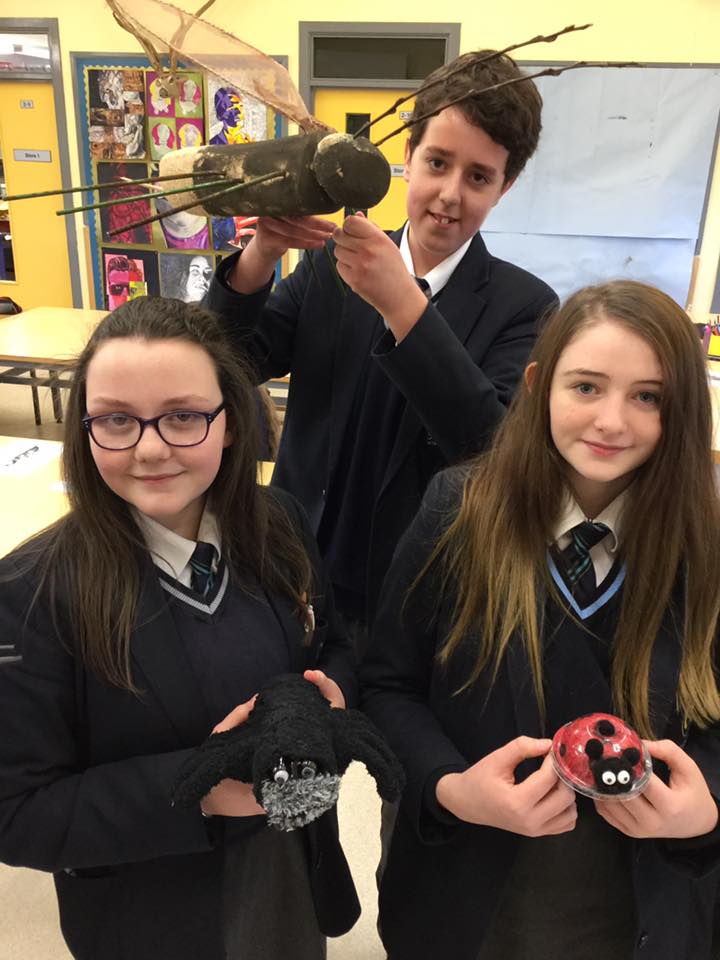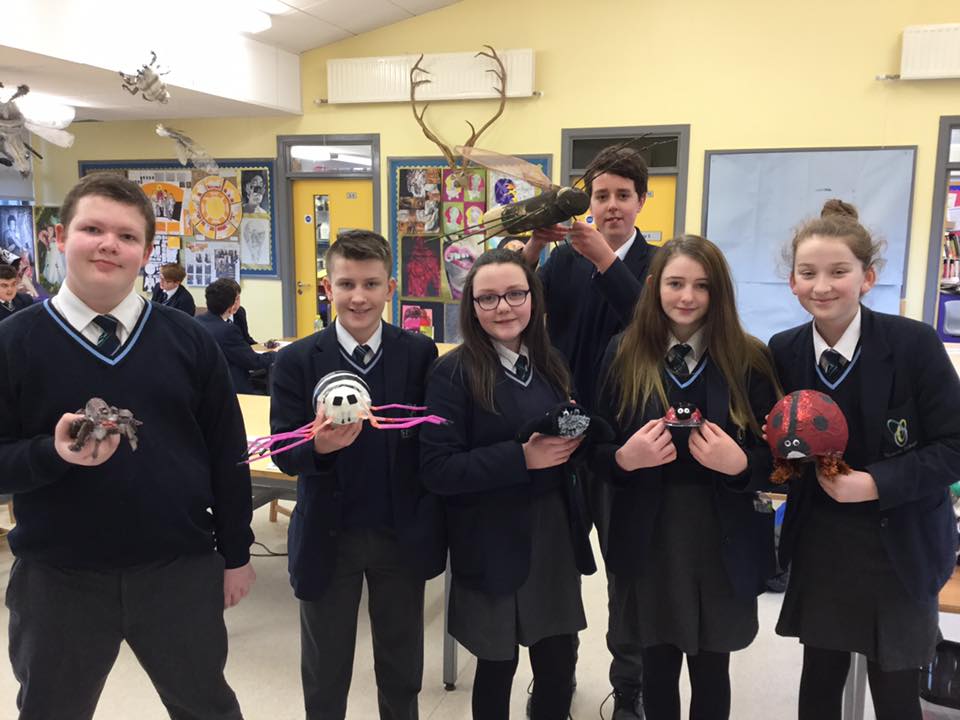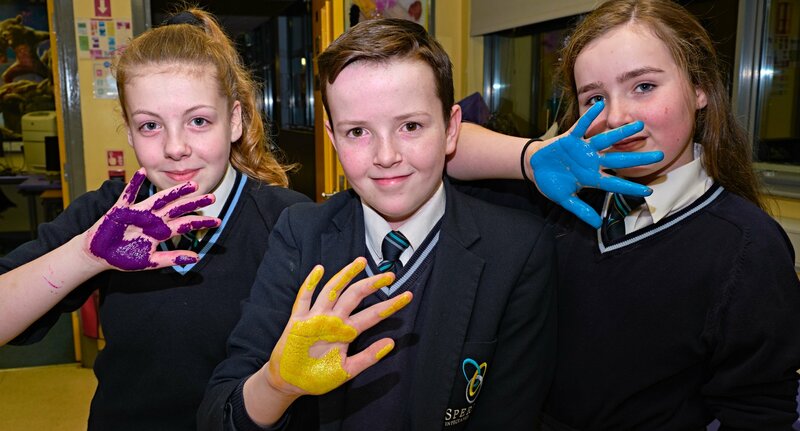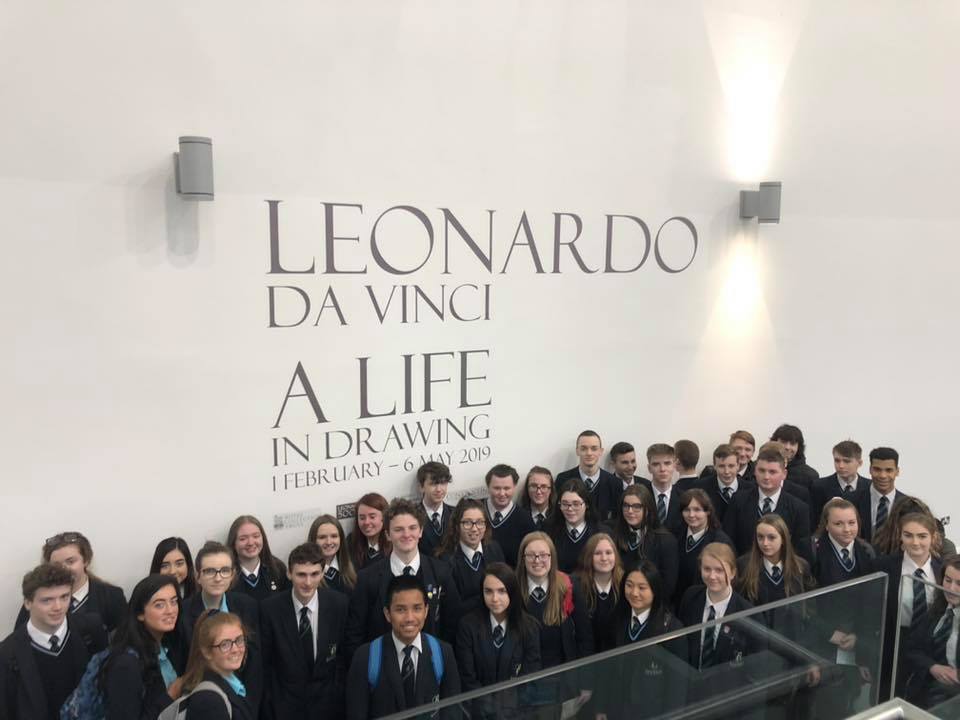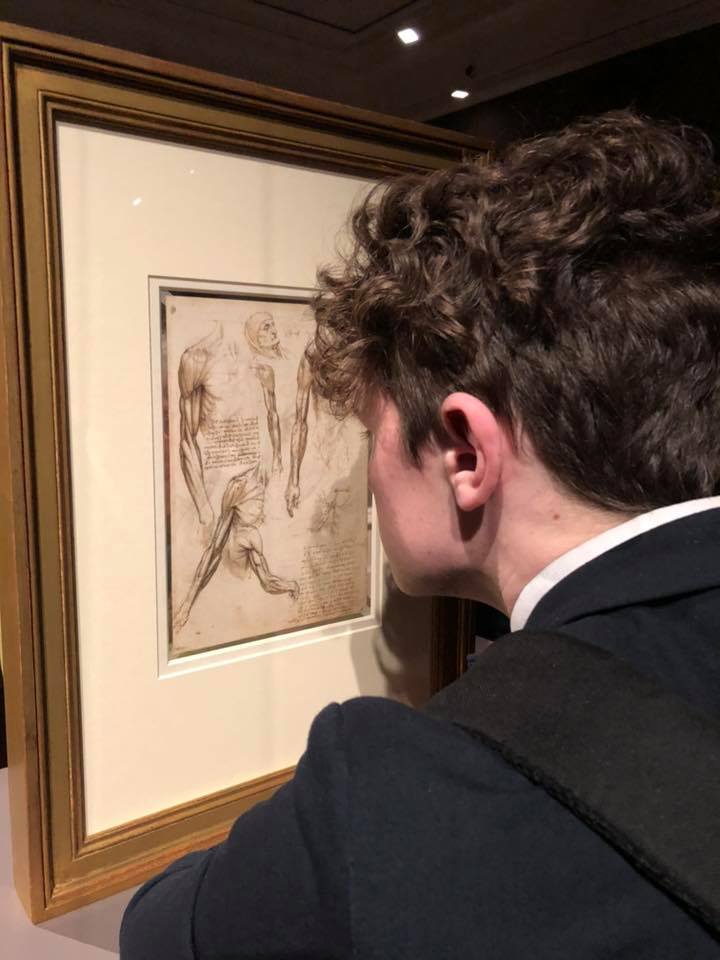ART & DESIGN
Teaching Staff:
Technical Staff:
Miss B Houston
Miss J Wen-Lin
Sperrin College’s Art & Design Department is at the creative centre of the school. The department is extremely well resourced and consists of 2 spacious classrooms, with an additional Sixth Form study room, a Mac Suite, Kiln room and textile and ceramics areas. The department enjoys continued success, 100% of all A Level Art and Moving Image Arts were awarded A*-C grades in August 2017.
KS3:
At KS3 (Years 8-10) pupils have the opportunity to work with and experience a wide variety of artistic mediums and techniques, including:
Ceramics, drawing & painting, textiles, printmaking, animation, 3D construction, photography and graphic image making using Photoshop.
In Year 8 pupils ask the big question - How can I make my mark in Art & Design? To answer this they explore various topics including:
In Year 9 pupils ask the big question - How do Artists see the world around them? To answer this they explore various topics including:
In Year 10 pupils ask the big question - How do Artists make an impact on the world? To answer this they explore various topics including:
Why study Art & Design at GCSE and beyond?
In addition the obvious technical and practical skills developed through studying Art & Design at GCSE and A Level, students will also develop transferable skills, such as:
GCSE:
Our GCSE Art and Design specification develops students’ understanding of how meanings, ideas and intentions can be communicated through visual and tactile language. Students learn how to use different media and technologies to realise their intentions. They develop their understanding of the creative and cultural industries, and refine their work through experimentation.
As well as exploring many artistic skills and processes, students develop their knowledge and understanding of historical and contemporary contexts, societies and cultures. The broad and flexible content gives students the freedom to pursue a range of creative pathways.
Our GCSE in Art and Design is a linear qualification: students take all the assessment at the end of the course.
The specification has two components:
Component 1
- Part A: Exploratory Portfolio
- Part B: Investigating the Creative and Cultural Industries
Component 2: Externally Set Assignment.
A Level:
The creative industries are the fastest growing area of the economy and are vital to economic success. Studying art, craft and design creates a pathway to a career in a creative industries-related field.
GCE Art and Design requires students to develop key transferable skills such as creativity, innovation, higher level thinking skills and problem solving. It encourages students to find alternative approaches and take risks in their work. It also develops in depth knowledge of art and design through research and practical activities, intellectual capabilities and independent approaches to learning.
The course has four units: two at AS level and two at A2:
AS 1: Experimental Portfolio
AS 2: Personal Response
A2 1: Personal and Critical Investigation (including a 1000-3000 word written investigation)
A2 2: Thematic Outcome
Further Study & Careers in Art & Design
Our Art & Design students have gone on to enjoy further study in a range of prestigious University Courses and have accessed careers creative industries. Possible career routes are outlined below:
- Ms J McCarter BA (Hons) PGCE - Head of Department
- Mr J Alexander BDes (Hons) PGCE
- Mrs S Donnelly BA (Hons) PGCE
Technical Staff:
Miss B Houston
Miss J Wen-Lin
Sperrin College’s Art & Design Department is at the creative centre of the school. The department is extremely well resourced and consists of 2 spacious classrooms, with an additional Sixth Form study room, a Mac Suite, Kiln room and textile and ceramics areas. The department enjoys continued success, 100% of all A Level Art and Moving Image Arts were awarded A*-C grades in August 2017.
KS3:
At KS3 (Years 8-10) pupils have the opportunity to work with and experience a wide variety of artistic mediums and techniques, including:
Ceramics, drawing & painting, textiles, printmaking, animation, 3D construction, photography and graphic image making using Photoshop.
In Year 8 pupils ask the big question - How can I make my mark in Art & Design? To answer this they explore various topics including:
- Portraiture
- Colour and Mark making
- Aboriginal Art
- Celtic Art & Design
- Ceramic Celtic Creatures
In Year 9 pupils ask the big question - How do Artists see the world around them? To answer this they explore various topics including:
- Surrealism – Salvador Dali
- Landscape and seeing big! – David Hockney
- Seeing Differently – Picasso, cubism and 3d Construction
- Still Life
- Animation
In Year 10 pupils ask the big question - How do Artists make an impact on the world? To answer this they explore various topics including:
- Architecture – Frank Gehry and Zaha Hadid
- Pop Art & Street Art – Andy Warhol and Shepard Fairey
- Graphic Image Making – Joel Robinson
- 3D Paper Constructions – Peter Rush
- Mood and Marks – Giacometti
Why study Art & Design at GCSE and beyond?
In addition the obvious technical and practical skills developed through studying Art & Design at GCSE and A Level, students will also develop transferable skills, such as:
- Creativity
- Observation
- Self-expression
- Focus
- Discipline
- Perseverance
- Collaboration
- Risk-taking
GCSE:
Our GCSE Art and Design specification develops students’ understanding of how meanings, ideas and intentions can be communicated through visual and tactile language. Students learn how to use different media and technologies to realise their intentions. They develop their understanding of the creative and cultural industries, and refine their work through experimentation.
As well as exploring many artistic skills and processes, students develop their knowledge and understanding of historical and contemporary contexts, societies and cultures. The broad and flexible content gives students the freedom to pursue a range of creative pathways.
Our GCSE in Art and Design is a linear qualification: students take all the assessment at the end of the course.
The specification has two components:
Component 1
- Part A: Exploratory Portfolio
- Part B: Investigating the Creative and Cultural Industries
Component 2: Externally Set Assignment.
A Level:
The creative industries are the fastest growing area of the economy and are vital to economic success. Studying art, craft and design creates a pathway to a career in a creative industries-related field.
GCE Art and Design requires students to develop key transferable skills such as creativity, innovation, higher level thinking skills and problem solving. It encourages students to find alternative approaches and take risks in their work. It also develops in depth knowledge of art and design through research and practical activities, intellectual capabilities and independent approaches to learning.
The course has four units: two at AS level and two at A2:
AS 1: Experimental Portfolio
AS 2: Personal Response
A2 1: Personal and Critical Investigation (including a 1000-3000 word written investigation)
A2 2: Thematic Outcome
Further Study & Careers in Art & Design
Our Art & Design students have gone on to enjoy further study in a range of prestigious University Courses and have accessed careers creative industries. Possible career routes are outlined below:

